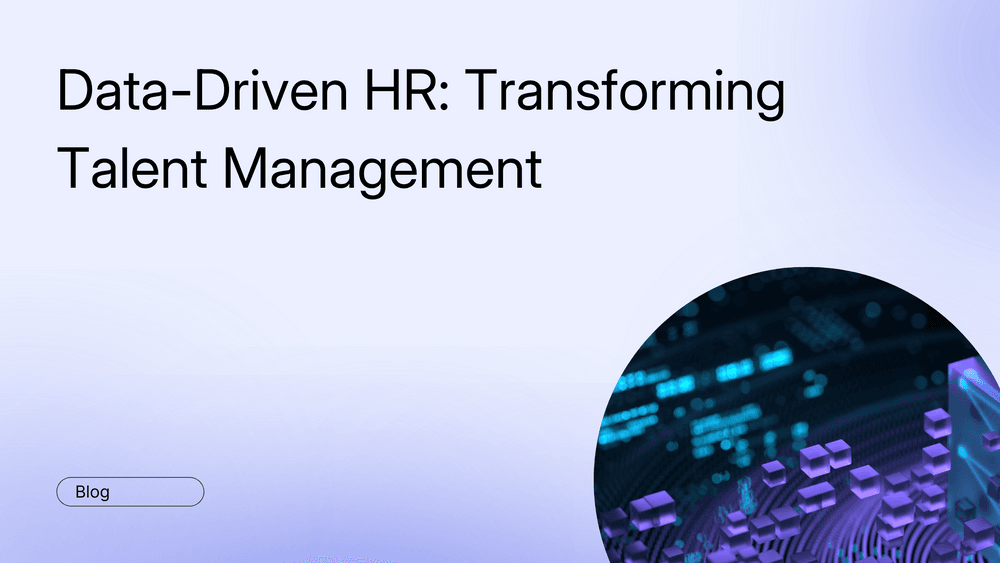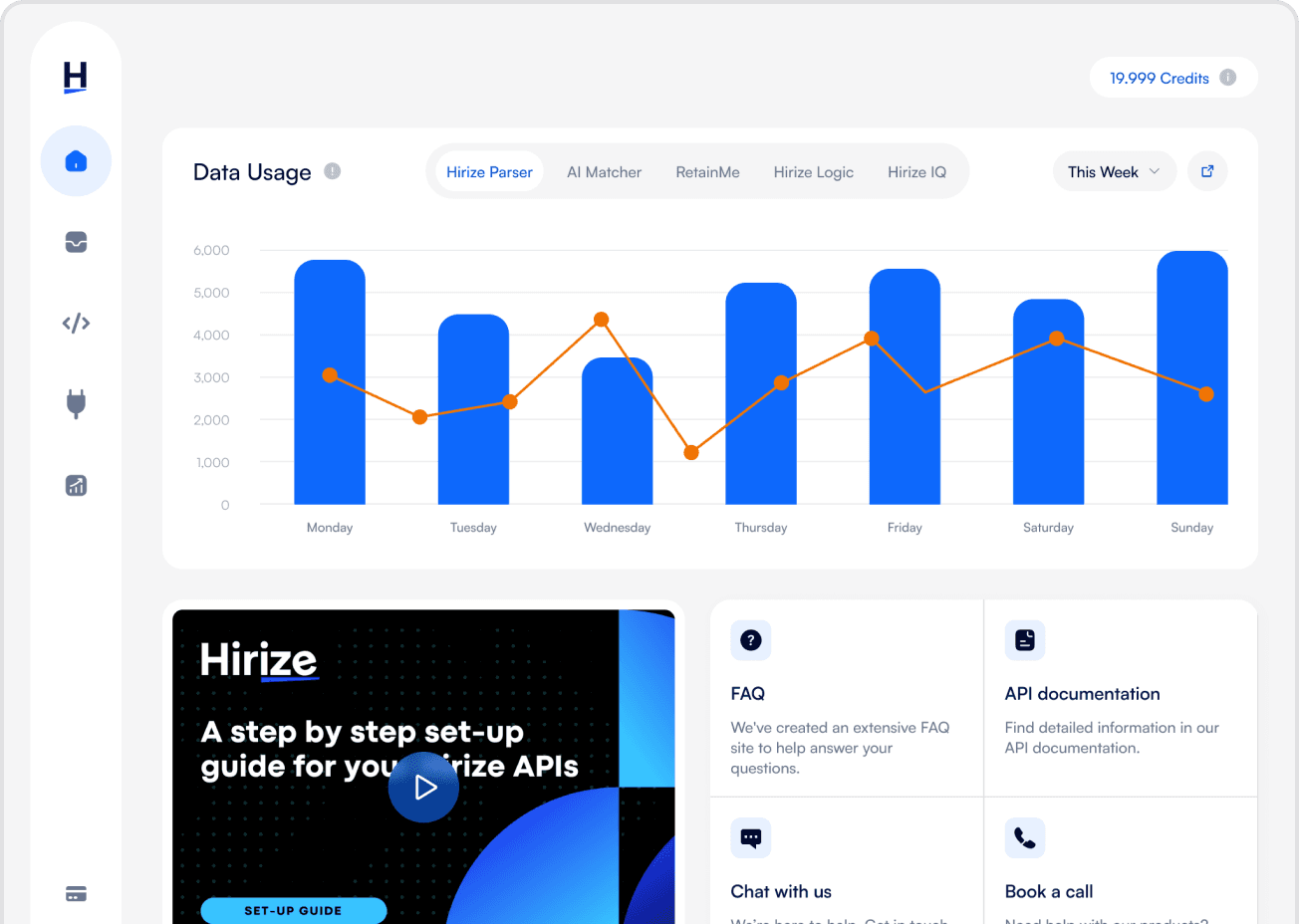superpowers?
Data-Driven HR: Transforming Talent Management
Explore the transformative power of data-driven HR strategies. Learn how analytics can revolutionize talent management.

Human Resources (HR) is experiencing a transformative shift, with data analytics emerging as a cornerstone for strategic decision-making. Gone are the days when HR decisions were guided solely by intuition and experience; today's HR professionals are turning to data-driven insights to steer their strategies, enhancing every facet of talent management from recruitment to retention. This evolution marks a significant leap towards more efficient, effective, and personalized HR practices.
In this article, you will learn:
- How data-driven decision-making is transforming HR practices.
- The key benefits of integrating analytics into talent management.
- Practical steps for transitioning your HR processes to a data-driven model.
The Benefits of Adopting Data-Driven HR
 In an era where every business decision can be backed by data, HR is no exception. The adoption of data-driven strategies within HR departments brings a multitude of benefits that can significantly enhance decision-making processes, talent management, and overall workforce planning. Here's how data analytics is making a difference:
In an era where every business decision can be backed by data, HR is no exception. The adoption of data-driven strategies within HR departments brings a multitude of benefits that can significantly enhance decision-making processes, talent management, and overall workforce planning. Here's how data analytics is making a difference:
Improving Decision-Making with Analytics
Data-driven HR enables organizations to make informed decisions based on empirical evidence rather than guesswork. By analyzing data related to employee performance, engagement, and turnover rates, HR professionals can identify trends, predict outcomes, and formulate strategies that align with the organization's objectives. This approach not only enhances the precision of HR decisions but also contributes to more strategic workforce planning and optimization.
Enhancing Talent Management and Workforce Planning
Analytics provide a deeper understanding of the workforce, facilitating more effective talent management. From recruitment to retirement, every aspect of the employee lifecycle can be optimized using data-driven insights. For instance, predictive analytics can help HR professionals forecast future staffing needs, identify potential leadership candidates, and pinpoint areas for employee development. This proactive approach to talent management ensures that the organization is always prepared to meet its current and future challenges.
Streamlining HR Processes
Data analytics can also streamline HR processes, making them more efficient and less prone to error. Automated data collection and analysis tools can significantly reduce the time and effort required for tasks such as performance evaluations, compensation analysis, and employee feedback collection. This not only frees up HR professionals to focus on more strategic tasks but also improves the overall employee experience by ensuring that HR services are delivered promptly and accurately.
Key Components of Data-Driven HR
To fully harness the power of data in transforming HR functions, it's essential to understand and implement the core components of a data-driven HR strategy. These elements serve as the foundation for integrating analytics into HR practices, enabling organizations to make more informed decisions and achieve better outcomes.
People Analytics and Its Impact on HR
At the heart of data-driven HR lies people analytics, a discipline that leverages data analysis and statistical models to understand, improve, and optimize the decisions concerning an organization's human resources. People analytics can cover a wide range of HR functions, including recruitment, performance management, employee engagement, and retention strategies. By systematically analyzing employee data, HR professionals can uncover valuable insights that lead to more effective and personalized HR policies.
Predictive Analytics for Proactive HR Management
Predictive analytics takes data-driven HR a step further by using historical data and statistical algorithms to forecast future outcomes. This proactive approach allows HR professionals to anticipate challenges and opportunities within the workforce, such as potential high-performer turnovers, future skill gaps, and the impact of training programs. Armed with these insights, HR can implement preemptive measures to address issues before they escalate, ensuring the organization's human capital is always aligned with its strategic goals.
Implementing Data-Driven HR in Your Organization
Transitioning to a data-driven HR model requires careful planning and execution. Organizations must invest in the right tools and technologies to collect, store, and analyze employee data effectively. Additionally, HR professionals need to develop skills in data analysis and interpretation to make sense of the data and translate it into actionable strategies. This might involve training existing staff, hiring new talent with expertise in data analytics, or partnering with external consultants.
Overcoming Common Challenges in Adopting Data Analytics
While the benefits of data-driven HR are clear, organizations often face several challenges in its adoption, including data privacy concerns, the complexity of data integration, and resistance to change among HR professionals and employees. Addressing these challenges requires a clear strategy, strong leadership, and a culture that values data-driven decision-making and continuous learning.
Conclusion
The journey through the transformative landscape of data-driven HR has unveiled the undeniable value of integrating analytics into human resources functions. From making more informed decisions and enhancing talent management to streamlining HR processes and predicting future workforce needs, the benefits of adopting a data-driven approach are vast and varied. Check out Hirize's AI-driven resume parser, and matching algorithm now!
superpowers?



